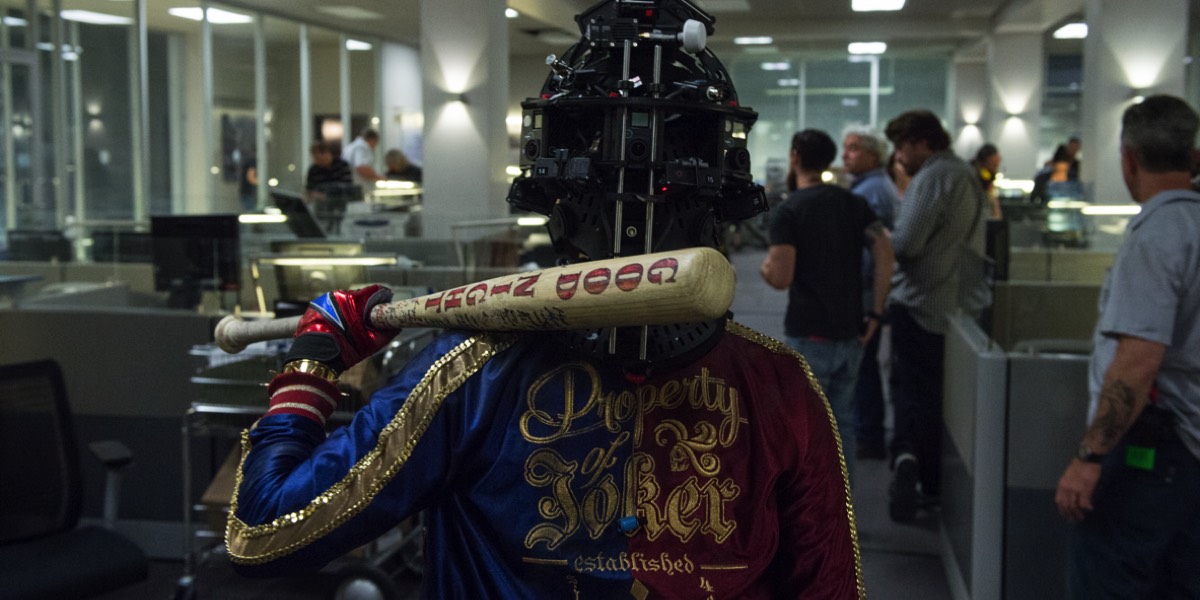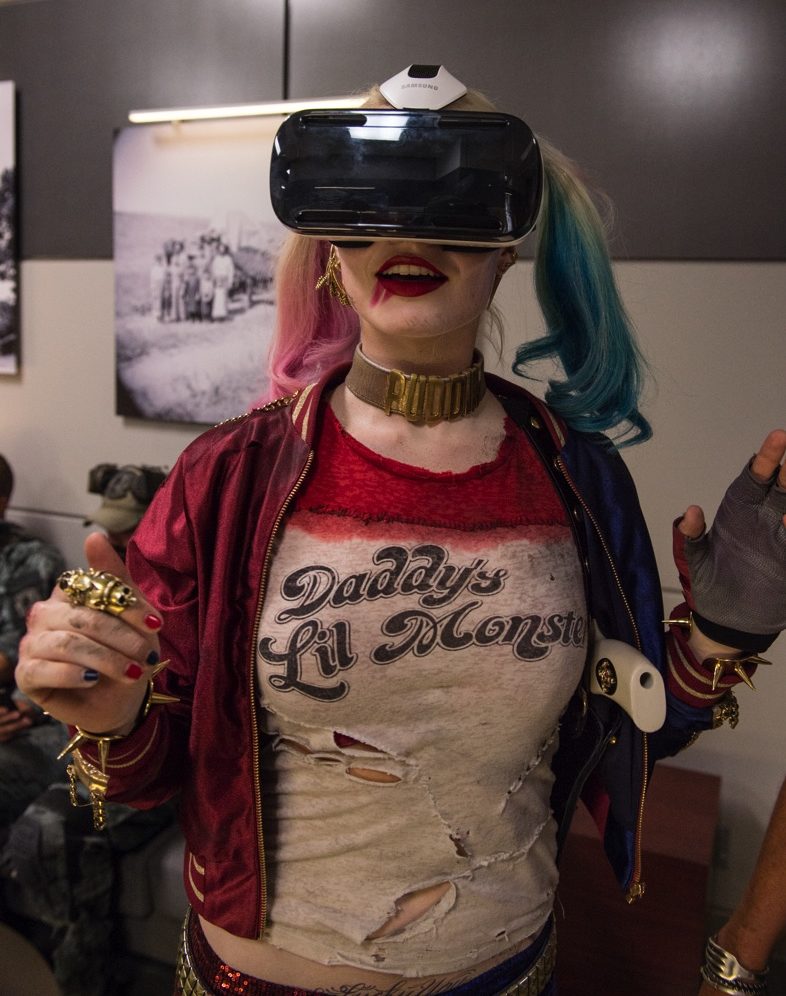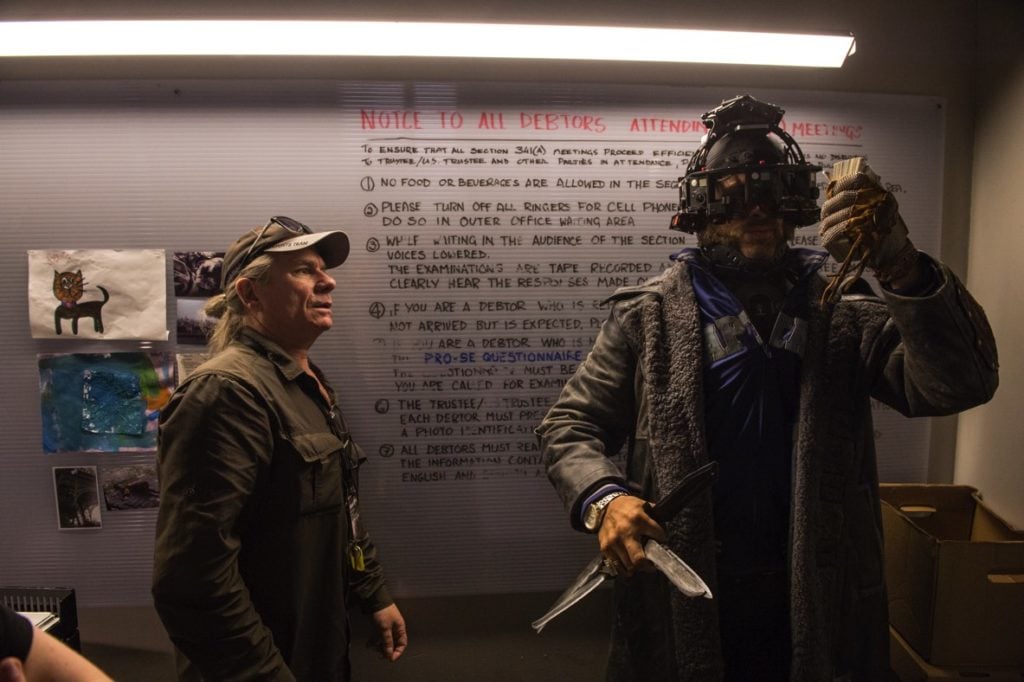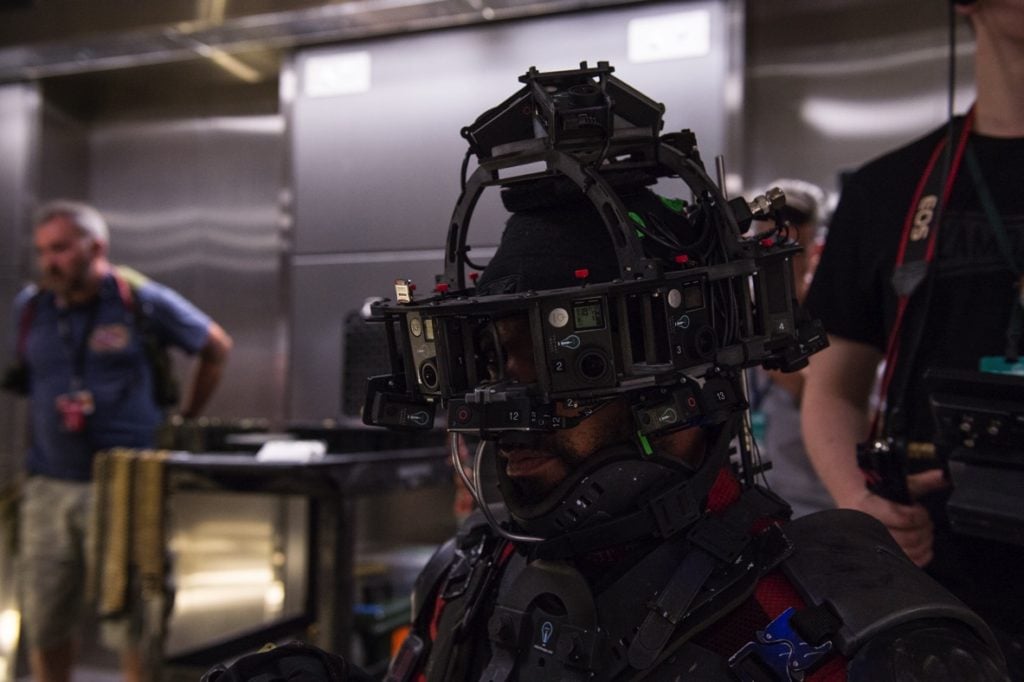Just as Australians are taking over Hollywood with Aussie actors, creatives, and other below-the-line production staff making their presence (and talent) known, we’re also making a name in emerging production sectors like virtual reality. When fans across the world put on a headset to watch the promotional tie-in to the Warner Bros tentpole Suicide Squad, it’ll be an experience crafted by the Australian team at Proxi VR.
The creative principals at Proxi VR are industry veteran Guy Norris and his 20-year-old filmmaker son Harrison. Norris has built a career as a stunt co-ordinator and second unit director on eye-popping Hollywood productions that include the Lord of the Rings trilogy, Mad Max: Fury Road, and the upcoming Ghost In The Shell. It was while working on Suicide Squad that Warner Bros executives mentioned their interest in a promotional VR experience, which in turn led to the formation of his VR production company.
While working on Suicide Squad in 2014, Guy and Harrison Norris attended the Slamdance film festival where Harrison had a film in competition. Here they were both exposed to some early stage VR.
“People can think that VR is simply taking a 360-degree camera which can be bought for a couple of hundred bucks, filming in 360, and then uploading through your phone. And of course it’s not. It’s so much more” – John Gregory
“He [Guy Norris] didn’t believe it was going anywhere because it wasn’t narrative driven,” revealed Proxi VR chief business officer John Gregory. “Guy was approached by the marketing people at Warner Bros, who made him aware that they were going to include, as part of the promotional campaign for Suicide Squad, a VR piece. They wanted to stand out ahead of the crop of superhero films being released this year and asked Guy if he knew anything about VR. Being a good producer, he said yes. That’s where the genesis of Proxi happened.”
Gregory, himself, is also well known within the local industry having worked as vice president for Grundy Worldwide, general manager of Beyond International, and is a co-founder of independent production house Freehand TV.
Inspired by working on the Suicide Squad VR Experience, Norris contacted Gregory and invited him to his Gold Coast home to discuss the potential of virtual reality.
“Being in the Australian independent production sector, you’re always talking about what’s new and what might be a new content platform. I was aware of augmented reality and VR, but I couldn’t at that point, see any commercial path to market for it – not for the television work we were traditionally doing for Freehand. But when I put the Samsung Gear VR headset on and was shown the early roughs of the Suicide Squad VR, it was like drinking the Kool Aid.
“Our first focus for Proxi was to tap into those kinds of VR experiences like Suicide Squad” – John Gregory
“I immediately understood its potential. We talked at length over the next couple of days about other prospects for what Guy has termed Cinematic VR – live action narrative-led storytelling in the 360-degree filmed space. People can think that VR is simply taking a 360-degree camera which can be bought for a couple of hundred bucks, filming in 360, and then uploading through your phone. And of course it’s not. It’s so much more.”
The company will use Australia for its head office, but will also establish a footprint in New Zealand and in Los Angeles. While working on Ghost in The Machine in Wellington, Norris was made aware of the depth of talent available there who could work cost-efficiently.
“Hollywood is the coal face. That’s where we will be expected to get the commissions or to access content that we might need to license to make content from. That’s where most of the initial distribution deals will happen. Australia is a strategic headquarters. We will do some production here, but the market currently is incredibly immature for VR. New Zealand is the same, but New Zealand has a range of interesting government-led incentives for the film sector and they are really focusing on VR. They are establishing a VR/AR precinct in Auckland as part of their commitment to innovation.
“We have a Proxi New Zealand entity as well, so we will participate in that with technical staff, post-production people based in Auckland. We have technical staff in Los Angeles. At the moment we don’t have any production in Australia, but this is where all the planning comes from.
“Our first focus for Proxi was to tap into those kinds of VR experiences like Suicide Squad. We’ve got technology geniuses in Los Angeles available to us as part of Proxi, but it’s a very small company at the moment because everyone still effectively has their day jobs while we see how the business is going to be built. But we are now actively pursuing projects,” Gregory explained.
“They had to build the first close-proximity 360-degree virtual reality camera…the thing that was used for Suicide Squad was designed and constructed expressly for that purpose” – John Gregory
In the immediate future, the company is looking toward short-form video content of approximately 5-6 minutes to drive the business. The focus initially will be on live-action, scripted narrative drama with an immediate focus on the horror genre, to be released episodically through distribution platforms like iTunes, YouTube 360, or Machinima.
The plan is to sell direct to consumers. Gregory suggested that “you might buy one episode or six episodes of a themed piece and you’d be paying 99 cents like you do for a song or an episode or $6.99 for a season pass. That’s where we’re going to be operating for the first 12 months to two years.”
The debut of the Suicide Squad VR Experience at Comic Con in July worked as a soft launch for the business, with 10,000 convention attendees enjoying the experience that puts the user into the shoes of fan-favourite character Harley Quinn.
Producing the experience yielded some challenges, with the experience serving as one of the first action narrative VR films produced.
“They had to build the first close-proximity 360-degree virtual reality camera,” Gregory said. “The thing that was used for Suicide Squad was designed and constructed expressly for that purpose and was designed uniquely to solve the issue of close proximity filming. Up until recently you couldn’t get too close to a camera filming in 360 without losing data – your face becomes a blob at some point. They resolved that. They also knew because of their stunt work how to fly cameras through scenes and how to use the camera, in a mobile sense, to track the action.”



